Now that spring is beginning to turn to summer, it is time for huck!
Huck’s light and lacy texture is perfect for summer scarves, and there are so many variations that you will never exhaust them all. In this article, I focus on 4-shaft huck and show how you can mix and match the treadlings to create your own design.
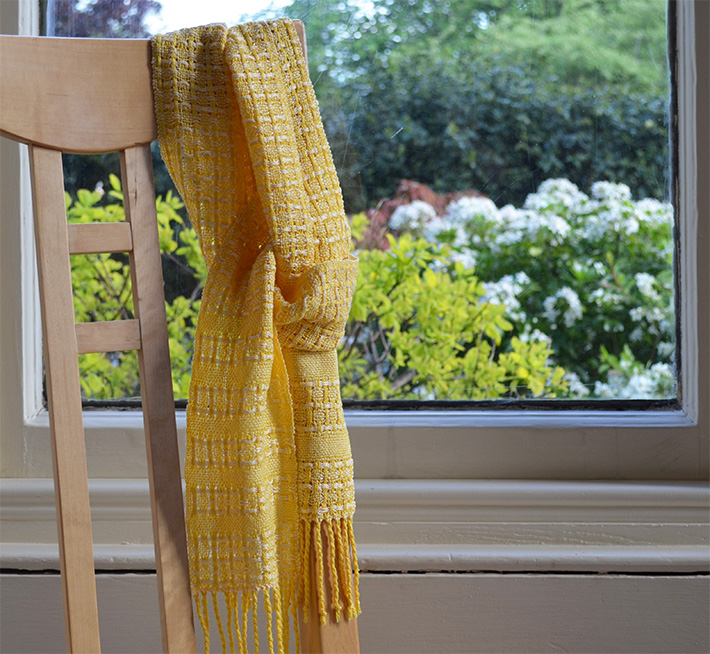 The huck threading
The huck threading
Both the threading and the liftplan for are organised into little groups, each with an odd number of ends or picks, usually three or five and sometimes seven. My examples will use five ends, but exactly the same principles apply to three or seven ends.
On four shafts the threading alternates groups A (threaded 1-4-1-4-1) and B (threaded 2-3-2-3-2):
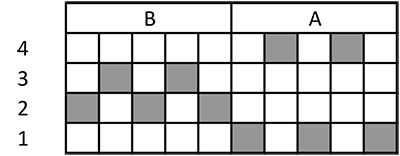
Notice that we can make plain weave on this threading by lifting shafts 1 & 3 and then 2 & 4.
It is useful to add a couple of extra ends at each side of the warp, threaded on shafts 1 and 2, to give a narrow plain weave selvedge.
Weaving huck
As well as plain weave, there are three main huck variations you can weave on this threading.
Warp spots
This liftplan gives you warp floats alternately in blocks A & B, which create little ovals when the cloth is finished. Note that the first group of five picks alternates the plain weave lift 1 & 3 with the pattern lift. The second group of five picks alternates the plain weave lift 2 & 4 with the pattern lift.
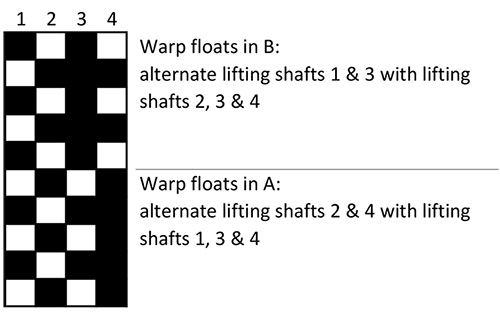
Weft spots
As for warp spots, but this time the floats are in the weft.
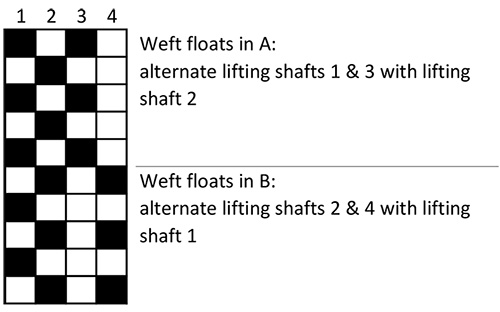
Huck lace
By weaving warp and weft floats at the same time, we can create lace.

The sampler below shows (from top to bottom) warp spots, weft spots and huck lace alternating with bands of plain weave.

Mixing it up
We can go a long way simply using these four possibilities, but because they all share the same plain weave base we also have the option to mix and match. For instance, taking the first group of five picks from the huck lace liftplan and the second group of five picks from the warp spots liftplan gives us spots-in-frames (see scarf below).
A popular way to weave huck is to use areas of lace to break up a plain weave ground. Personally, I like to do the opposite! There is nothing to stop you having a textured or lace ground and inserting areas of plain weave for contrast.
Designing a scarf
For a summer scarf choose a yarn you can wear comfortably – I chose cotton – and wind a fairly narrow warp. You will need an open sett to show off the lacy weave so take that into account in your calculations. I used a 6/2 cotton set at 15 epi and wound 90 ends in all for a warp that is 6 inches wide in the reed. For the slightly lighter 8/2 cotton a good sett to start with would be 18 epi.
Huck is meant to be woven square. However, when you are weaving huck lace the long floats in both blocks make it very difficult to keep successive picks in each group from beating down together. My advice is not to try. Simply make sure that when you move to the next group you don’t force the two opposite plain weave picks together: let them sit with a gap in between. In this way you will be able to maintain an ‘average ppi’ which corresponds to your epi.

A good way to enhance the visible texture in huck is to choose a weft yarn which is a similar color to your warp yarn but a shade lighter. My warp was a bright primose yellow and my weft a softer pastel yellow.
If you want to use hem-stitching on your scarf then begin with a couple of picks of plain weave, so that you have something to stitch into. After that, the choice is yours! I wove my scarf using the spots-in-frames pattern described above, with a few bands of plain weave inserted at each end to give it some additional interest. I deliberately varied the width of the stripes to keep it lively.
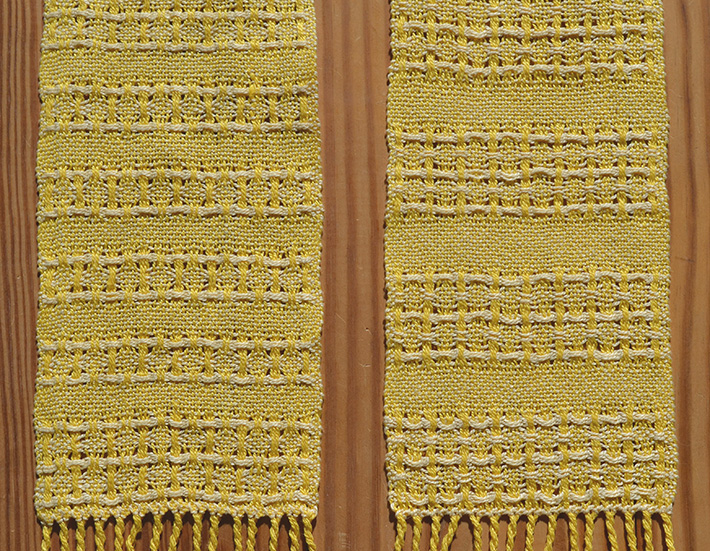
When you have cut off and washed your scarf, make sure to give it a good hard press. This will help to fix those floats in place and enhance the visual effect of your huck texture.
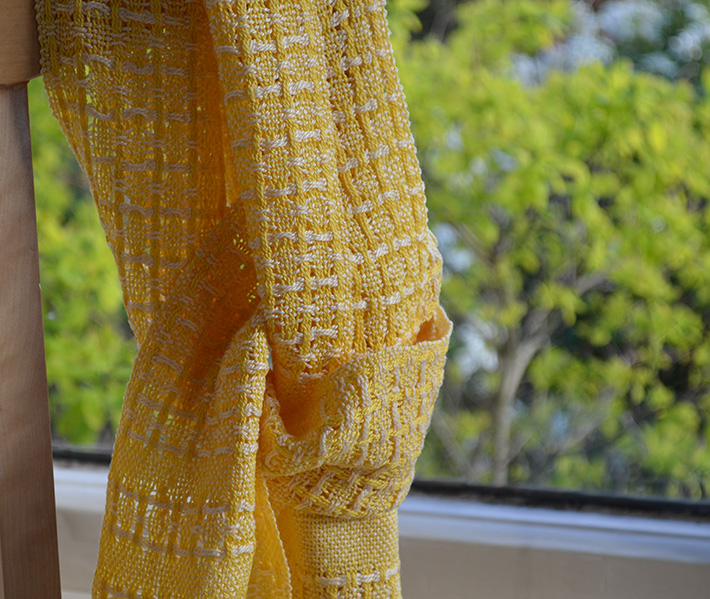

Share tips, start a discussion or ask one of our experts or other students a question.
No Responses to “Huck: The Perfect Summer Weave”